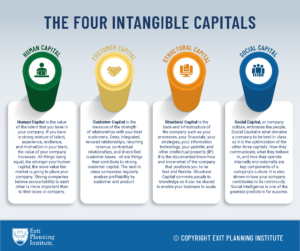Beyond the Chair: Navigating Key Metrics for Dental Office Prosperity
One common problem that dentists face is that they spend ample time working in their businesses and not much time working on their businesses. They can hardly be blamed, for while the hygiene department is a crucial contributor to production, dentists are responsible for most of the daily production total. The pressure to produce is intense. Visions of loan payments, payroll, and personal obligations merge into a specter that roars to dentists about imposter syndrome and failure. A combination of pride, urgency, and fear can keep dentists pinned to the chair in a desperate attempt to produce at all costs and ignore less urgent needs. If this mindset takes hold, practitioners risk developing tunnel vision in which the target is production, and every possible arrow is shot toward the bullseye without much thought to taking time to aim.
Production is critical to the success of a dental office. There is no doubt about that. But production is not all that is important to success. A production mindset can prevent dentists from thinking about their practices holistically and can limit the attention paid to other critical numbers, like weak collection ratios and skyrocketing expenses.
Production shortsightedness prevents dentists from dealing with the other crucial numbers in their practices. How can practitioners prioritize production without developing a production blind spot? Below are some tips for keeping a balanced approach to all the essential practice numbers.
- View production goals as ideal objectives, not as absolute requirements. No one can accurately predict whether the multi-implant patient will show up for her appointment or if the weather will prevent a patient from making it to the office. Production is fluid from day to day. Sometimes, it is possible to redeem the lost appointment by keeping a list of patients who are available on short notice. These patients should live close to the office so they can fill the empty spot without causing you to run behind. But when a day’s production evaporates, and no one can fill the gap, make use of the time to attend to other practice priorities.
- Evaluate your office’s scheduling practices. If no-shows are common in your office or treatment plans are gathering dust, it may be time to evaluate the office’s scheduling policy. Faltering production numbers can be an early indicator that scheduling needs attention. If you use block scheduling, ensure you have detailed the contingencies for instances when the block remains empty. For example, if you instruct schedulers to keep a two-hour crown and bridge block open from 2 p.m. to 4 p.m. on Wednesday, tell them when that reserved spot can be released to schedule other appointment types. Be specific in your wishes. Otherwise, each staff member may use different criteria.
- Schedule time each month to intentionally evaluate other office metrics. High production numbers can be a panacea for dental offices. Completed treatment does not always equal money in the door if the bill for services remains outstanding. However, production is only one factor in the income equation. Dentists focusing on production will likely underperform in working on their businesses because they spend too much time working in them. Below are other metrics besides production that need monitoring for improved productivity.
Accounts Receivable Aging:
Evaluating your practice’s accounts receivable aging is a significant step toward getting paid promptly for the production of the past. Many offices overlook the necessity of routinely and intentionally looking at how long it takes them to get fully paid for the procedures. Aged accounts receivable are divided into distinct categories. These categories are: 0-30 days, 31-60 days, 61-90 days, and > 90 days. Below are some practice benchmarks
Collections experts report that the ability to collect amounts past 60 days drops from 90% to 70%, so staying active in getting accounts paid within the first 60 days past the service date is critical.
Some offices make the mistake of beginning the aging process from the date of an insurance payment. Avoid this tactic. This aging method improves the look of the accounts receivable aging report but re-sets the timer on the collections process, which results in less cash flow today.
Collections:
A careful examination of the company’s accounts receivable aging report is likely to lead to an inspection of its collection practices. According to Watson (2022), 17.8% of people in the United States have medical debt in collections. The Consumer Financial Protection Bureau states that, in 2021, medical debt was the most common debt that appeared on credit reports.
Credit reporting rules have recently changed. The No Surprises Act became effective on January 1, 2022. This federal law protects patients from receiving bills when being treated by an out-of-network provider in an in-network facility such as an emergency room or urgent care facility. This act requires private practitioners, including dentists, to provide uninsured and self-pay patients with good faith estimates of the cost of services before treatment. Fees that exceed $400 of the estimate are subject to the patient initiating the Patient-Provider Dispute Resolution process.
The three nationwide credit bureaus (Equifax, Experian, and TransUnion) changed their credit reporting guidelines in 2022 to support consumers facing medical debt. Effective July 1, 2022, paid medical collection debt is no longer included on consumer credit reports. Additionally, these agencies increased the time before reporting will begin on unpaid medical debt to one year. The agencies will only report on outstanding medical debt that exceeds $500.
Dentists must develop lawful collection practices in their offices that prevent debt from accumulating by implementing policies that help patients understand their financial obligations for treatment rendered before beginning treatment. It is wise to provide detailed treatment plans for all patients, review the costs associated with treatment at each step in the treatment plan process, and set clear expectations for settling accounts.
Expense Reports:
The hectic pace of a dental office lends itself to putting recurring purchases on autopilot. It is easy to “set it and forget it.” This philosophy encourages waste and prevents offices from routinely monitoring their subscriptions and monthly orders. As a result, it is not uncommon to have recurring charges mount up over time. Auditing your subscriptions and regular expenses is a great way to increase the office bank balance without increasing production.
Dentists should schedule a monthly meeting to review expenses and plan for any necessary changes in the budget. It is beneficial to schedule a yearly review of the contracts for the office’s credit card processing service, toothbrush ordering, IT services, and other subscription services to ensure that the fees are reasonable and that the service is still relevant to the dental office needs.
Insurance Contracts:
Insurance contracts do not always favor the provider. It is not unheard of for a dentist to enter into a contract paying less for procedures than the cost of providing the supplies. This inequitable payment may go unnoticed unless providers schedule yearly insurance payer audits. It is not feasible to tackle every insurance contract yearly. Instead, devote time to examining two or three contracts for unsatisfactory conditions that you have encountered. Contact the company and request a review of the contract terms. If you cannot renegotiate more favorable terms, it may necessitate evaluating whether your office should continue participating with the payer.
Managing a dental office is complex. Focusing on production is a daily necessity. However, there are many other critical metrics to monitor. Try to implement a plan for addressing all the crucial numbers in your dental office. You will soon enjoy a more balanced and accurate view of your practice.
Looking for more Dental Articles? Click Here!
References:
Watson, A. M. (2022, November 11). 5 rights you have around medical debt collection. GoodRx Health. 5 Rights You Have Around Medical Bills and Debt Collection Laws – GoodRx
Resources:
Transunion. (2022, March 18). Equifax, Experian, and TransUnion support U.S. consumers with changes to medical collection debt reporting. Equifax, Experian, and TransUnion Support U.S. Consumers With Changes to Medical Collection Debt Reporting










